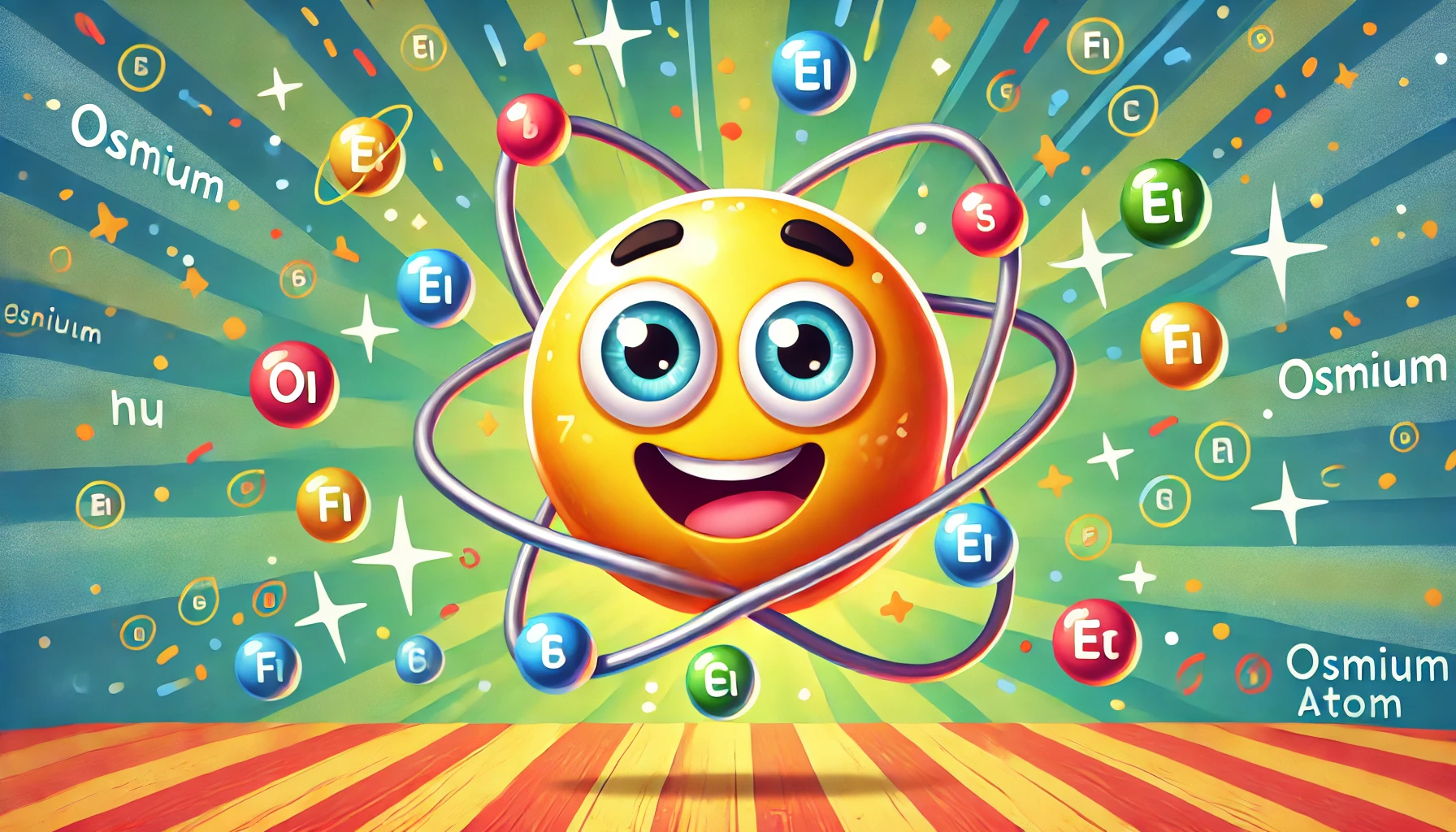Understanding Osmium: Properties, Uses, Health Risks, and Fascinating Facts
Understanding Osmium: Properties, Uses, Health Risks, and Fascinating Facts
Table of Contents
- Introduction to Osmium
- Properties of Osmium
- Uses of Osmium
- Health Risks of Osmium Exposure
- Interesting Facts about Osmium
- Environmental Impact of Osmium
- Conclusion
- References
Understanding Osmium: Properties, Uses, Health Risks, and Fascinating Facts
Introduction to Osmium Osmium is a chemical element with the symbol Os and atomic number 76. It is one of the densest elements known and is part of the platinum group metals. This article explores the properties, uses, health risks, and interesting facts associated with osmium, providing a comprehensive understanding of this rare and valuable metal.
Properties of Osmium Osmium is characterized by several distinct physical and chemical properties.
Physical Properties
- Appearance: Osmium is a hard, brittle metal with a bluish-white color.
- Density: The density of osmium is 22.59 g/cm³, making it the densest naturally occurring element.
- Melting Point: Osmium has a melting point of 3,033°C (5,491°F).
- Boiling Point: The boiling point of osmium is 5,012°C (9,054°F).
Chemical Properties
- Reactivity: Osmium is relatively inert and does not react easily with most chemicals. However, it can form osmium tetroxide (OsO₄), which is highly toxic and volatile.
- Compounds: Osmium forms various compounds, such as osmium tetroxide (OsO₄) and osmium dioxide (OsO₂).
Uses of Osmium Osmium has several specialized applications across different industries due to its unique properties.
Alloys
- Hard Alloys: Osmium is used in alloys with other platinum group metals to produce hard, wear-resistant materials. These alloys are used in fountain pen nibs, electrical contacts, and instrument pivots.
Catalysts
- Chemical Catalysts: Osmium compounds, such as osmium tetroxide, are used as catalysts in chemical reactions, including the synthesis of certain organic compounds and in the field of organic chemistry for osmylation processes.
Electrical and Electronics
- Electrical Contacts: Osmium’s high density and hardness make it suitable for use in electrical contacts and filaments that must withstand extreme conditions and high wear.
Medical Applications
- Staining Agent: Osmium tetroxide is used as a staining agent in electron microscopy to provide contrast to biological samples.
Other Applications
- Jewelry and Watches: Osmium alloys are sometimes used in fine jewelry and high-end watches due to their hardness and unique bluish tint.
Health Risks of Osmium Exposure While osmium itself is relatively inert, exposure to osmium compounds, particularly osmium tetroxide, can pose significant health risks.
Inhalation and Ingestion
- Respiratory Issues: Inhalation of osmium tetroxide vapors can cause severe respiratory irritation, coughing, and lung damage.
- Gastrointestinal Issues: Ingestion of osmium compounds can cause gastrointestinal distress, including nausea, vomiting, and abdominal pain.
Skin and Eye Contact
- Skin Irritation: Direct contact with osmium tetroxide can cause skin irritation, burns, and dermatitis.
- Eye Irritation: Exposure to osmium tetroxide vapors or solutions can cause severe eye irritation, damage, and potential blindness.
Chronic Exposure
- Organ Effects: Prolonged exposure to osmium compounds may affect the kidneys, liver, and other organs, and can be potentially carcinogenic.
Interesting Facts about Osmium Osmium has several intriguing aspects that make it an interesting element.
Discovery
- Discovered in 1803: Osmium was discovered by English chemist Smithson Tennant in 1803. It was named after the Greek word “osme,” meaning “smell,” due to the strong odor of its oxide.
Unique Properties
- Densest Element: Osmium is the densest naturally occurring element, which contributes to its use in specialized high-density applications.
- Hard and Brittle: Osmium is extremely hard but brittle, which makes it challenging to work with but useful in specific applications requiring hardness and wear resistance.
Isotopes
- Stable Isotopes: Osmium has seven naturally occurring stable isotopes, with osmium-192 being the most abundant.
- Radioactive Isotopes: Several radioactive isotopes of osmium are known, including osmium-187, which is used in geological dating.
Environmental Impact of Osmium Osmium is not known to have significant environmental impacts, but its extraction and use should still be managed responsibly.
Natural Occurrence
- Abundance: Osmium is one of the rarest elements in the Earth’s crust and is typically found in ores with other platinum group metals.
- Mining: Extraction of osmium is often done as a byproduct of mining for other platinum group metals, and must be done carefully to avoid environmental contamination.
Industrial Waste
- Waste Management: Proper disposal of osmium-containing industrial waste is crucial to prevent environmental contamination, particularly due to the toxicity of osmium tetroxide.
Conclusion Understanding osmium, its properties, uses, health risks, and interesting facts provides valuable insight into this rare and valuable metal. While osmium has several important applications, particularly in hard alloys and as a catalyst, appropriate safety measures should be taken when handling osmium compounds. Its applications in electronics, jewelry, and medical technology highlight its importance in modern technology and industry.

<ⓒ WizardMedics (wizardmedics.com)>


